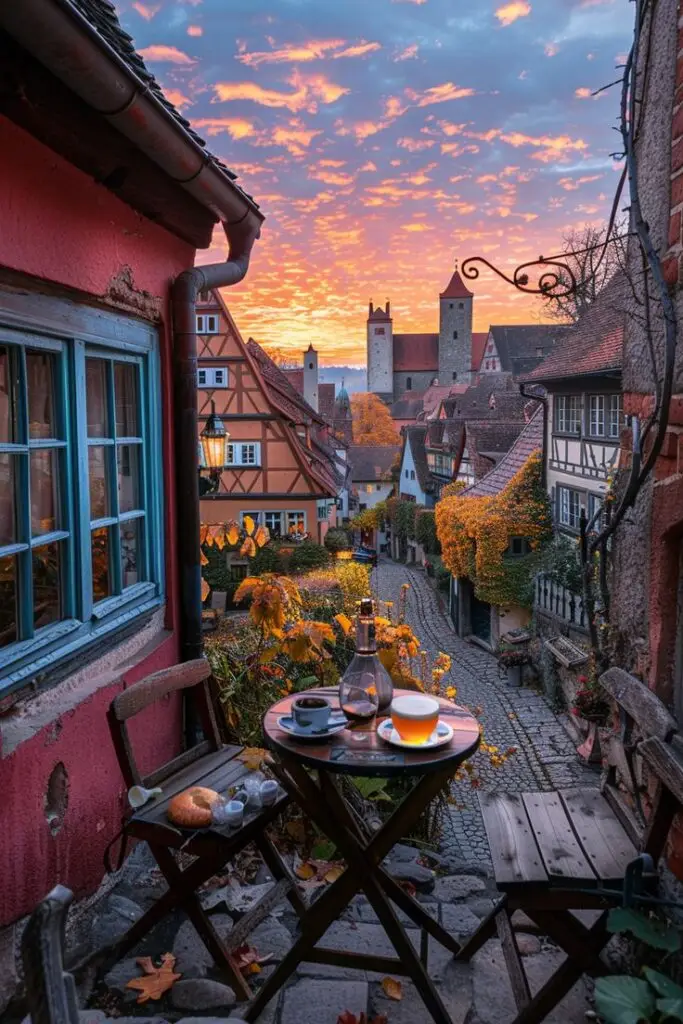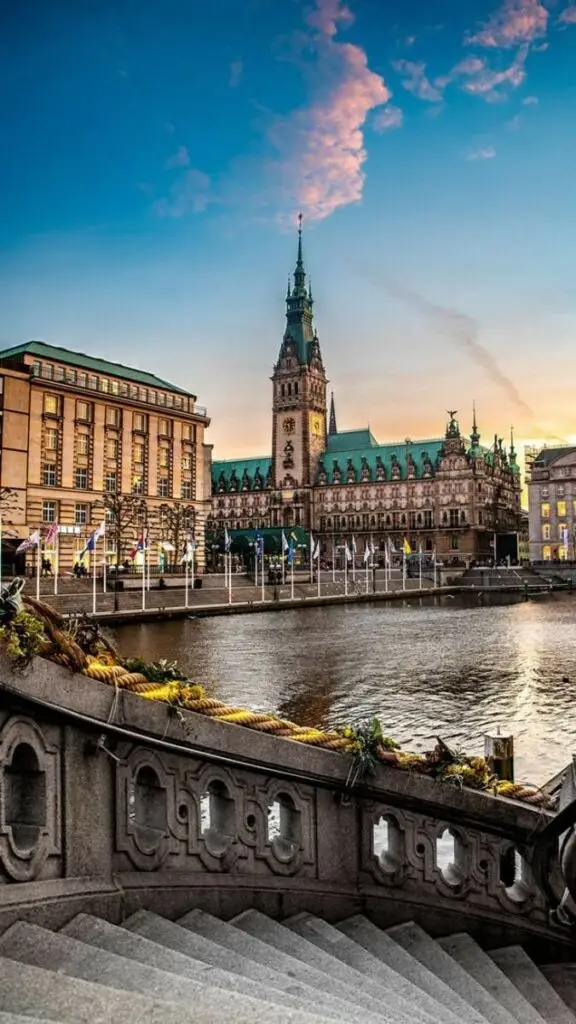German architecture stands as a testament to precision and innovation, reflecting a deep commitment to craftsmanship. This article explores five iconic structures that exemplify the unique blend of functionality and aesthetic appeal found in German design.
Through a closer look at these landmarks, you will uncover how they not only define their surroundings but also serve as inspirations for modern architecture. Each structure showcases innovative techniques and artistic vision, highlighting Germany’s significant influence in the architectural world.



1)Berlin Hauptbahnhof
Berlin Hauptbahnhof, known as the central railway station of Berlin, is a significant feat of modern architecture. Finished in 2006, it is one of the largest train stations in Europe.
You will notice the innovative design that emphasizes transparency and light. The extensive use of glass creates an open, airy atmosphere, allowing passengers to enjoy natural light throughout the space.
The station consists of multiple levels, showcasing a unique multi-layer layout. This design facilitates efficient movement for the thousands of travelers passing through daily.
The integration of various transport modes, including trains, buses, and trams, highlights its functional design. This hub not only serves as a transport center but also hosts shops and restaurants, enhancing the travel experience.
Berlin Hauptbahnhof effectively combines functionality with cutting-edge architectural elements, making it a prime example of contemporary German design.



2)Neuschwanstein Castle
Neuschwanstein Castle, located in Bavaria, is a remarkable example of 19th-century architecture. Commissioned by King Ludwig II, it was intended as a tribute to Richard Wagner.
Construction began in 1869, and it combines Romanesque and Gothic elements, showcasing Ludwig’s romantic vision. The castle’s striking towers and ornamentation create a fairy-tale appearance that attracts millions of visitors each year.
The interior features elaborate frescoes and intricate woodwork, reflecting the craftsmanship of the era. Each room tells a story, revealing the king’s fascination with legends and mythology.
Surrounded by the stunning Bavarian Alps, the castle offers breathtaking views. Its picturesque setting enhances its architectural beauty, making it a UNESCO World Heritage Site.
You can explore the various rooms and learn about the history behind the castle. Neuschwanstein remains a symbol of architectural innovation and a testament to the era’s creativity.



3)Reichstag Building
The Reichstag Building stands as a symbol of German democracy and history. Located in Berlin, it was designed by Paul Wallot and completed in 1894.
This structure showcases a striking blend of neo-Renaissance and modern architectural styles. Its iconic glass dome, added during the 1990s renovations led by architect Norman Foster, allows natural light to flood the interior and provides a 360-degree view of the city.
The dome serves both aesthetic and functional purposes, promoting transparency in governance. Visitors can ascend the spiral walkway, symbolizing the connection between citizens and their government.
The building has endured significant historical events, including a fire in 1933 that altered its use over the decades. Today, it houses the Bundestag, Germany’s parliament, reflecting its ongoing role in the nation’s political landscape.
The Reichstag’s design and renovations exemplify the balance between historical preservation and modern innovation. It invites you to engage with Germany’s past while being a part of its present and future.



4)Frankfurt Commerzbank Tower
The Frankfurt Commerzbank Tower stands as an example of modern architectural innovation. Completed in 1997, it was designed by Sir Norman Foster and reaches a height of 300 meters.
This skyscraper reflects a unique approach to high-rise design. Its structure features a series of atriums that enhance natural light and provide open spaces.
The design incorporates eco-friendly elements, such as an advanced ventilation system. This not only reduces energy consumption but also creates a healthier environment for occupants.
Distinctive for its three-tiered silhouette, the tower integrates with the Frankfurt skyline. The use of glass and steel emphasizes transparency and reflects the dynamic nature of the city.
The tower serves not only as an office building but also as a symbol of economic strength in Germany. Its innovative design has influenced subsequent skyscrapers around the world.



5) Frauenkirche in Dresden
The Frauenkirche, or Church of Our Lady, is a remarkable example of German Baroque architecture. Located in Dresden, this church is known for its stunning dome and intricate stonework.
The original structure was completed in the 18th century, featuring a unique design that emphasizes symmetry and elegance. The use of sandstone adds to its timeless appeal.
During World War II, the Frauenkirche suffered extensive damage. Its reconstruction began in the 1990s, driven by international support and donations. This effort resulted in the church being reopened in 2005, restoring its former glory.
You can appreciate the church’s architectural details, including the striking façade and carefully crafted interior. Visitors often admire the view from the dome, which offers breathtaking panoramas of Dresden. The Frauenkirche stands as a testament to resilience and the skill of craftsmen throughout the years.



Historical Overview of German Architecture
German architecture has evolved through several significant periods, each contributing unique elements and styles. This evolution showcases a blend of regional characteristics and overarching European trends.
Medieval to Renaissance Period
During the Medieval period, German architecture was characterized by Gothic styles, evident in cathedrals like Cologne Cathedral. This structure features intricate designs, pointed arches, and soaring spires, which exemplify the era’s focus on verticality and light.
The Renaissance introduced classical ideals, merging form and function. Regional variations flourished, blending Italian influences with local traditions. Town halls and churches often showcased elaborate façades and detailed sculptures, reflecting the era’s emphasis on harmony and proportion.
Baroque to Neoclassical Influences
The Baroque period brought dramatic expressions and grandeur to German architecture. Structures showcased bold forms, intricate ornamentation, and a sense of movement. Notable examples include the Würzburg Residence, which features lavish interiors and expansive gardens.
As the Neoclassical movement emerged, architecture returned to principles derived from ancient Greece and Rome. You can observe symmetry and simplicity in civic buildings, often constructed with a focus on public function. These designs emphasized democracy and the ideals of the Enlightenment, reshaping urban landscapes.
Modern and Postmodern Innovations
The 20th century marked a significant shift with the introduction of modern architecture characterized by minimalism. Streamlined forms and industrial materials became prevalent, as seen in the Bauhaus school’s influence. This movement prioritized functionality and rejected excessive ornamentation.
Postmodern architecture reintroduced color and historical references, pushing back against strict modernist principles. Iconic examples like the Vitra Fire Station incorporate dynamic forms and unexpected details, representing a departure from uniformity. This period reflects a diverse architectural landscape that continues to evolve today.
Key Architectural Principles
German architecture exemplifies distinct principles that contribute to its innovation and quality. These principles include precision in design, advanced materials, and a strong emphasis on sustainability.
Precision in Design
Precision is a cornerstone of German architectural practice. Architects meticulously calculate dimensions, ensuring every element fits seamlessly within the structure. This attention to detail creates not only functional spaces but also enhances aesthetic appeal.
Technical drawings and 3D modeling software are often used to envision projects before construction. This approach reduces errors and ensures that the final output aligns with the original vision. Structures often exhibit clean lines and geometric clarity, reflecting the philosophy that functionality must harmonize with beauty.
Use of Advanced Materials
German architects frequently incorporate advanced materials to achieve innovative designs. High-performance concrete, glass, and steel are common, allowing for greater flexibility in structural design. These materials promote durability while enabling unique architectural expressions.
For instance, glass facades are not only visually striking but also improve the energy efficiency of buildings. By utilizing innovative insulation technologies, buildings remain functional across various climates. This strategic selection of materials further enhances the overall aesthetic while ensuring longevity.
Emphasis on Sustainability
Sustainability is integral to German architecture, manifested through eco-friendly designs and energy-efficient technologies. Architects prioritize the use of renewable materials, minimizing the environmental impact of their projects.
Techniques such as passive solar design and rainwater harvesting are common, creating buildings that work in harmony with their surroundings. Additionally, projects often include green roofs and energy-efficient systems to reduce carbon footprints. This commitment to sustainability aligns with a broader goal of creating environmentally responsible urban spaces.
Impact of Cultural Heritage
Cultural heritage plays a vital role in shaping German architecture. It influences the design process and brings together traditional craftsmanship with modern innovation. The integration and preservation of historical elements contribute to the identity of contemporary structures.
Integration of Traditional and Modern Elements
German architecture often reflects a harmonious blend of past and present. Structures like the Elbphilharmonie in Hamburg highlight this approach. The building integrates traditional brickwork with a modern glass structure, symbolizing innovation.
Architects now frequently draw inspiration from historic techniques. Elements such as timber framing or decorative facades are incorporated into contemporary designs. This integration enhances aesthetic appeal while honoring local traditions.
This balance fosters a sense of cultural continuity. As modern demands change, the commitment to uphold traditional practices becomes essential. By merging these two aspects, architects create spaces that resonate with both residents and visitors.
Preservation Efforts
Preserving Germany’s architectural heritage requires ongoing commitment and resources. Organizations work diligently to restore and maintain historic sites, ensuring they remain relevant. Successful preservation includes adapting old structures for modern use while safeguarding their historical integrity.
Government policies often support these initiatives through funding and regulations. For instance, the Denkmalschutzgesetz (Monument Protection Act) provides legal frameworks for conservation.
Community involvement is also crucial. Local groups frequently participate in preservation efforts, raising awareness about vulnerable sites. Public support ensures that these architectural treasures endure for future generations.






